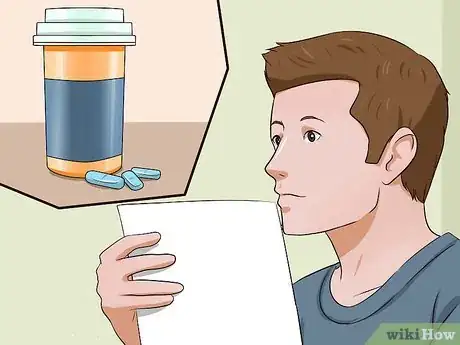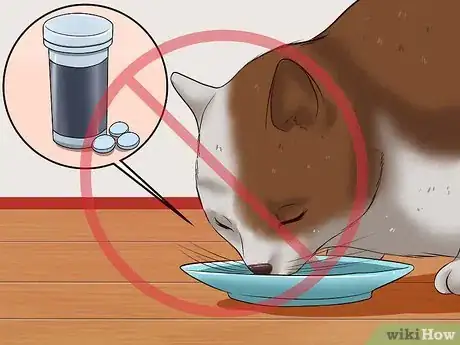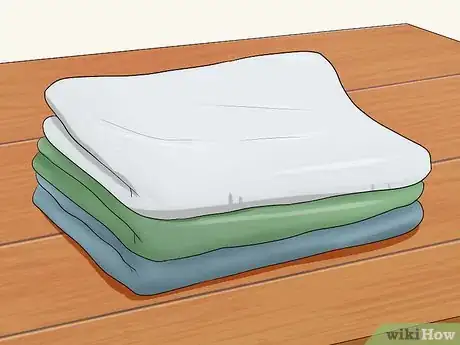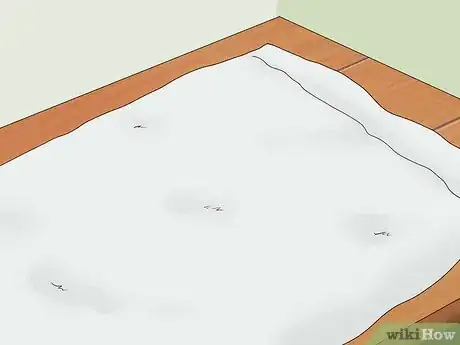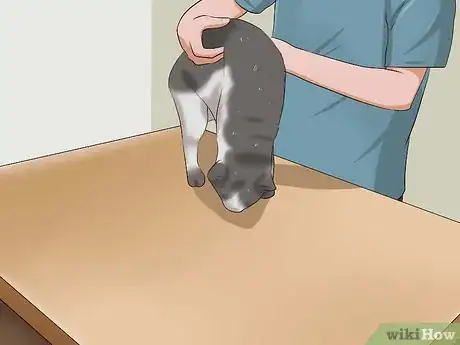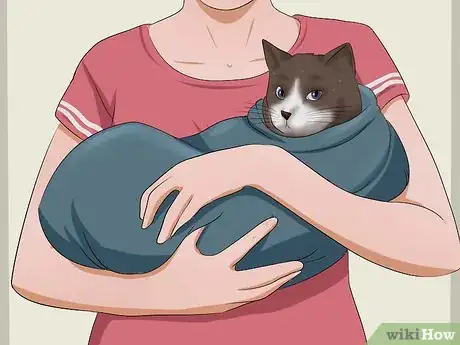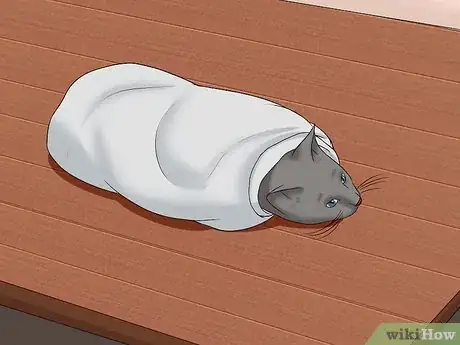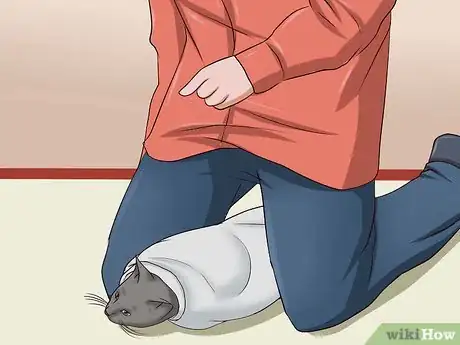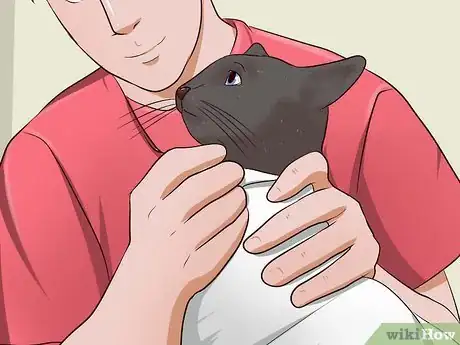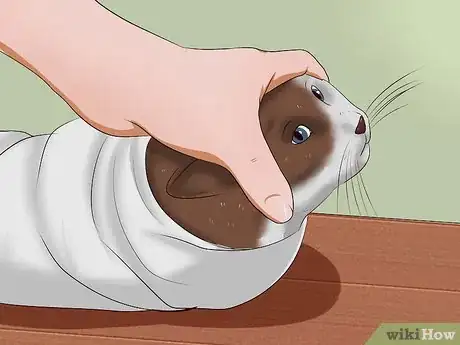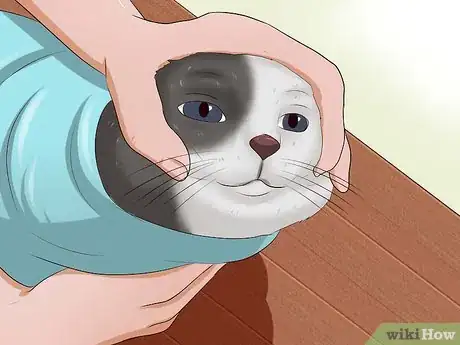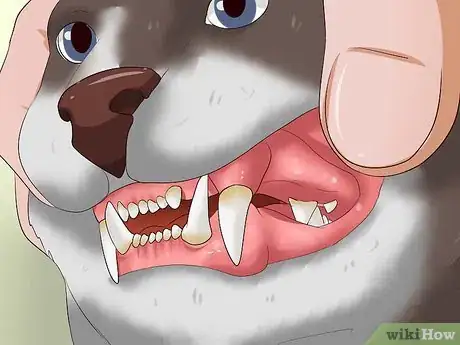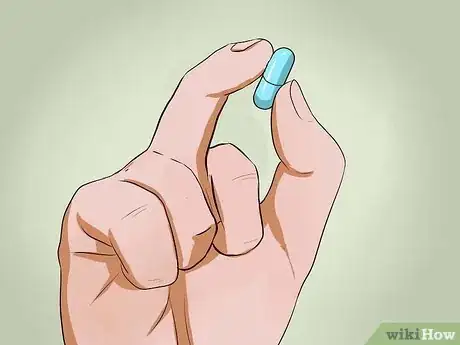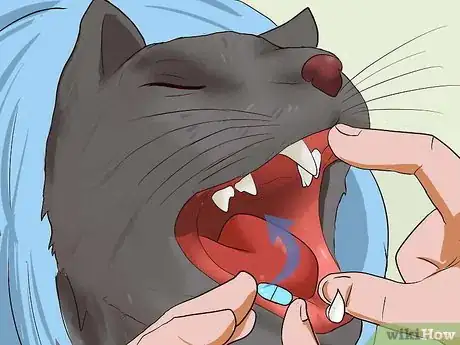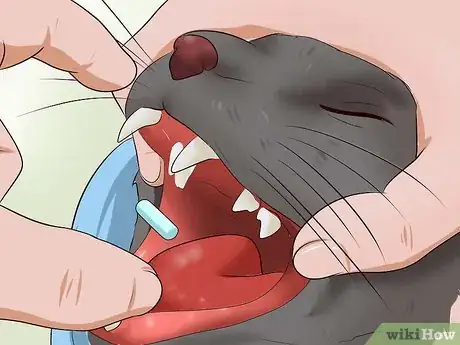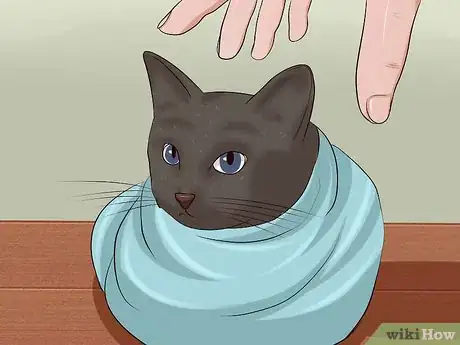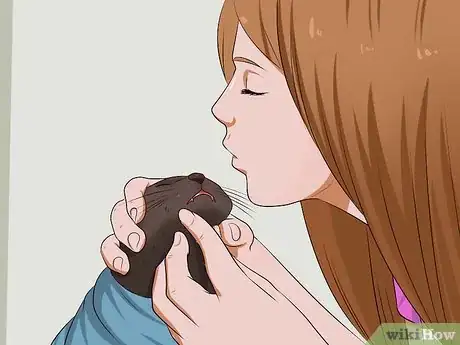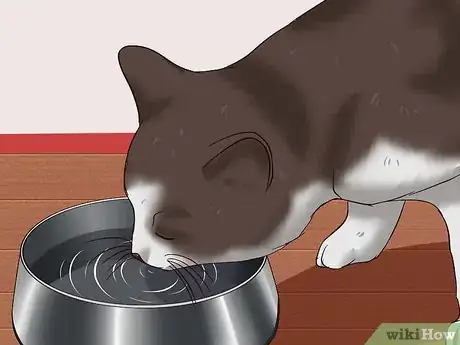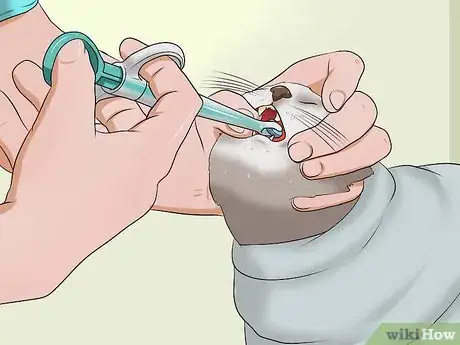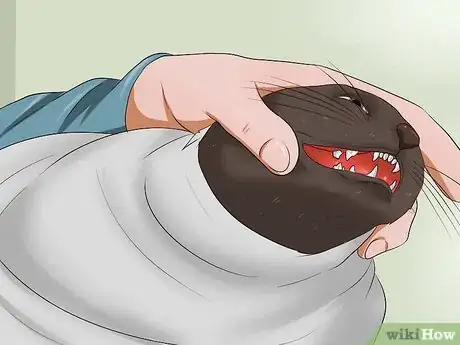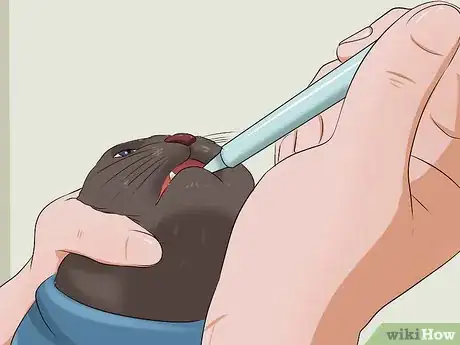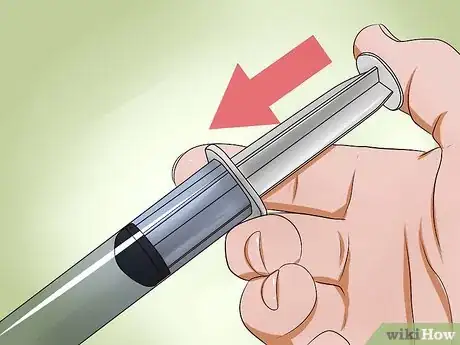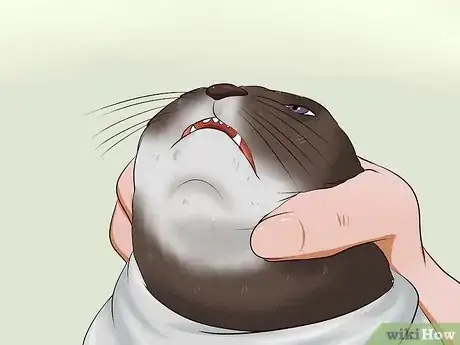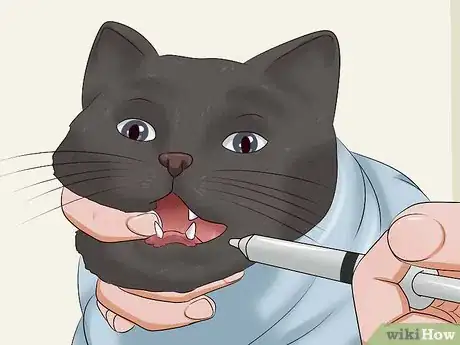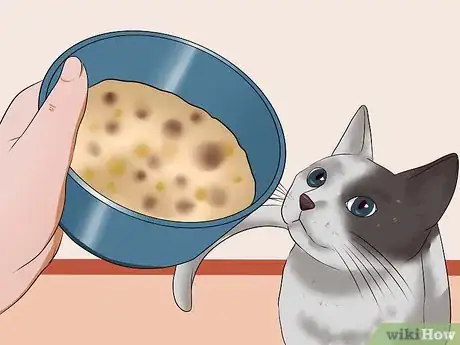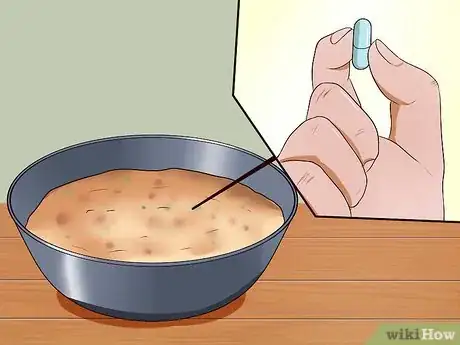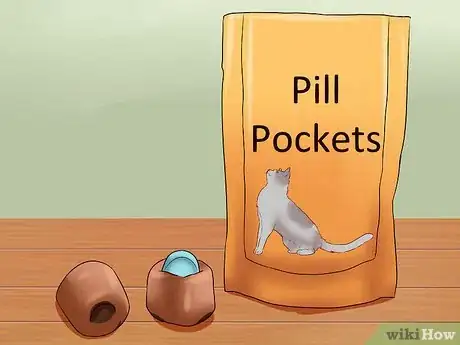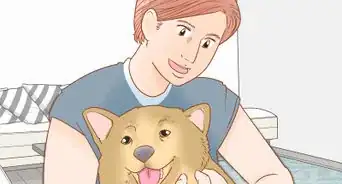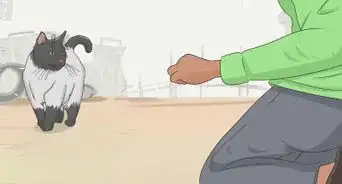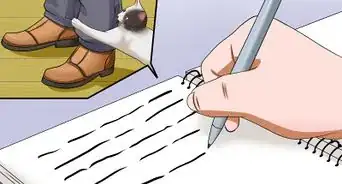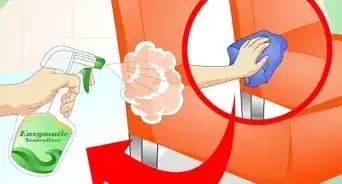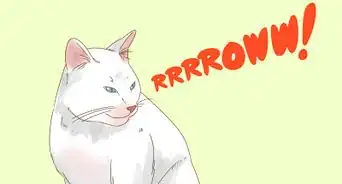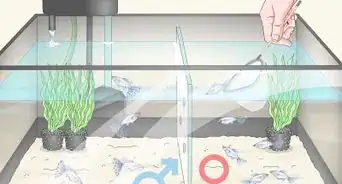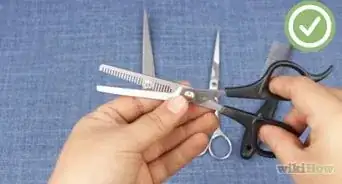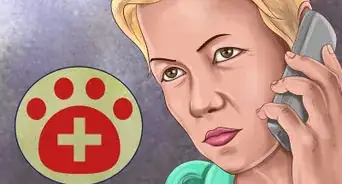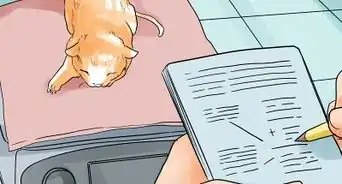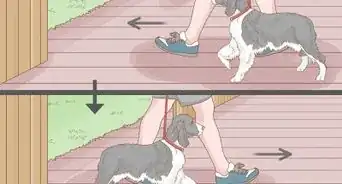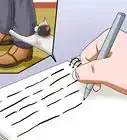This article was co-authored by Jamie Freyer, DVM. Dr. Jamie Freyer is a Licensed Doctor of Veterinary Medicine based in Washington. With over ten years of experience in clinical practice and industry, she specializes in veterinary medicine and surgery, animal behavior, and animal genetics. Dr. Freyer holds a BS in Life Science from The University of Portland and a DVM from Oregon State University.
wikiHow marks an article as reader-approved once it receives enough positive feedback. This article has 19 testimonials from our readers, earning it our reader-approved status.
This article has been viewed 899,211 times.
From deworming tablets to antibiotics, there are many different pills you must sometimes give a cat. Unfortunately, many cats are experts at spitting out pills, or they may refuse to eat them altogether. There are certain strategies you can use to help you learn how to give a pill to a cat with the least amount of stress to the cat—and to you.
Steps
Knowing the Medication
-
1Carefully read the prescription’s dosage instructions. Follow the directions that are printed on the prescription container. Take note of how much medication should be given at one time, how frequently the dosage is given, and how long you need to administer the medication.
- Ask your vet if you have any questions about the dosage or procedure for giving the medication.
-
2Keep time release medications whole. Some tablets are formulated to slow release the active ingredient over several hours, and crushing destroys this action. Follow the instructions that your veterinarian gave you with the prescription.
-
3Check if medication should not be accompanied by food. Some medications need to be given on an empty stomach, so hiding them in food could interfere with their effectiveness. In these cases, you’ll need to administer the medication on its own.
Restraining Your Cat
-
1Get a large towel or sheet. There are different ways of holding the cat, depending on whether you are working single-handed or have help available. Most ways work best, however, when you have a large towel or sheet in which to wrap the cat, or for the cat to sit on.
-
2Ask a friend to help you. Enlist the help of a friend to steady your cat. It can be much easier to wrangle a cat when you have an extra set of hands to help you.
-
3Place a towel on a table or countertop. Spread out a towel or sheet on top of a table or countertop. Working at a table is a comfortable height and will make your job of administering a pill easier. The cat will rest on the towel in part to be comfortable and in part so he doesn’t slip around on the table.[1]
-
4Place the cat on the table or countertop. Gently pick up your cat and set him down on the table. Have your helper grasp the cat's shoulders, with the cat's head pointing towards you.[2]
-
5Wrap your cat in a towel.[3] If your cat is likely to scratch, it’s best to wrap the cat in a towel. Spread out a large towel or sheet and place your cat on top of it. Wrap the towel around the cat so that the cat is inside the towel and his paws are snugly wrapped against his body. Make sure his head is sticking out.[4] This is often described as the burrito wrap, and it keeps paws and claws safely out of scratching range.
- This is often described as the burrito wrap, and it also resembles a swaddled baby. The cat’s limbs are held against his body, with paws and claws safely out of scratching range.
-
6Place the towel-wrapped cat on a table. If you have assistance, place the towel-wrapped cat on the tabletop. Ask your helper hold the cat steady while you prepare to open the cat’s mouth and deposit the pill.
-
7Kneel to restrain your cat. If you are working alone, wrap your cat in a towel. Kneel on the floor. Place the cat between your thighs with the cat's head facing towards your knees.
- Make sure both hands are free and able to administer the pill.
Opening a Cat’s Mouth
-
1Tip up the cat’s head. Now you have the cat restrained, you need to open his mouth.
- If you are right-handed, use your left hand to hold the cat's head. This leaves your dominant hand free to give the pill.
-
2Position your forefinger and thumb on the cat’s forehead. Make an upside-down U shape with the forefinger and thumb of your left hand. Place this over the cat's forehead.
- Your fingers will rest on either side of your cat’s face along the cheekbones.
-
3Rest the tips of your forefinger and thumb on the cat’s upper lip. Place the tip of your thumb and the fingertips on the upper lip so that your thumb rests on one side of the cat’s face and the forefinger tip rests on the opposite side.[5]
- When the head is raised with the nose angled towards the ceiling, the jaw falls open slightly.
-
4Gently press your thumb and fingertip into your cat’s mouth. When the cat’s jaw opens a little, push your thumb and fingertip down and into the mouth. Be sure to keep the cat’s lips between your fingers and the teeth. The cat will feel his lip press against his teeth and will naturally open his mouth to avoid biting his own lip.[6]
- If you are giving liquids with a syringe, you only have to open the mouth just slightly. If you are giving a pill, open the mouth wider.
Giving the Pill
-
1Hold the pill in a pincer-like grip. Using your dominant hand, grip the pill between the tip of your thumb and middle finger.
-
2Apply pressure with your forefinger to open your cat’s mouth. Place the tip of your forefinger on the point of the cat's chin, resting it between the two lower canine teeth (the large fang-like teeth). Apply gentle downward pressure and his mouth will open fully.[7]
-
3Drop the pill into the cat's mouth.[8] Aim to drop the pill over the back of the tongue. If you place the pill far enough back, if the cat tries to spit it out, the contractions of the tongue actually push the pill backwards into the throat where it is swallowed.[9]
- If you drop the pill and it lands on the tip of the tongue, keep holding the mouth open and use the middle finger of your dominant hand to push the tablet further back on the tongue.
-
4Release the cat’s mouth. After the pill has been placed in the cat’s mouth, make sure that the pill is swallowed. As soon as the pill is in the right place, release your fingers from the cat’s mouth. Let the cat close his mouth and swallow by lowering his jaw.
- If you are not sure if the pill went far enough back in the mouth, hold the cat's mouth closed until you see him swallow.
-
5Blow gently across the cat’s nostrils. Some cats can be stubborn and refuse to swallow. If this is the case, blow gently across his nostrils, which triggers a swallow reflex. As he swallows, he’ll start gulping. Let go of the mouth and check to see that he doesn't spit the pill out.[10]
-
6Follow the pill with some water. Once the pill is successfully swallowed, offer the cat a drink and something to eat. This makes sure the pill has gone all the way down the esophagus into the stomach.
-
7Use a pill giver if necessary.[11] If you are hesitant to put your fingers inside the cat's mouth, consider using a pill giver. A pill giver is a plastic grabber that grips the pill.
- Load the pill giver with the pill.
- Open the cat’s mouth.
- The end of the pill giver is inserted very gently into the back of the cat’s mouth.
- Press the plunger to knock the tablet out of the grabber. It will fall down your cat's throat.
Giving Liquid Medications
-
1
-
2Place the nozzle into the pouch between the cheek and the teeth. Slide the nozzle of the syringe over the teeth. Let the syringe rest in the pouch between the cat’s teeth and its cheek on one side of the mouth.[14]
-
3Press the plunger slowly to release the liquid. Allow the liquid medication to go into the cat’s mouth. Pause frequently so that the cat can swallow the liquid comfortably and steadily.
- If you are using a bulb syringe, gently and slowly squeeze the bulb to release the liquid into the cat’s mouth. Go slowly and pause frequently.
-
4Do not flood the cat’s mouth with liquid. The most important thing is never to flood the mouth and always let the cat swallow mouthfuls in between. If you squirt too much liquid into the cat’s mouth, the cat risks breathing in and inhaling liquid down into his lungs. This can have serious consequences, including pneumonia.[15]
-
5Remove the syringe when it’s empty. As soon as you have administered all of the liquid medication into the cat’s mouth, remove the syringe and allow the cat to close his mouth.
- If the cat is struggling, you might need to administer the liquid medication in two stages.
Hiding Tablets in Food
-
1Take away food for a few hours before giving the pill. Some medications are designed specifically with cats in mind, and the tablets are tiny, making them easier to hide in food. Make sure the cat is hungry by taking food away for a few hours before giving the tablet.[16]
-
2Hide the pill in wet food.[17] Give the cat a quarter of his regular meal, with the pill hidden in it. Once you are sure the plate is clean, give the remainder of his dinner. [18]
- To make it extra likely he will eat the food, consider giving his all-time favorite treat. Hide the pill in that treat and serve along with his food.
-
3Use a pill pocket. Pill pockets are tasty treats that have a cavity in them for you to pop the pill inside (much like jam in a donut). The ultra-tasty outer pocket disguises the taste of the tablet and the cat happily swallows it down.[19]
- Pill pockets are available in a variety of flavors from your veterinarian or local pet store.
Expert Q&A
-
QuestionHow do you trick a cat into taking a pill?
 Jamie Freyer, DVMDr. Jamie Freyer is a Licensed Doctor of Veterinary Medicine based in Washington. With over ten years of experience in clinical practice and industry, she specializes in veterinary medicine and surgery, animal behavior, and animal genetics. Dr. Freyer holds a BS in Life Science from The University of Portland and a DVM from Oregon State University.
Jamie Freyer, DVMDr. Jamie Freyer is a Licensed Doctor of Veterinary Medicine based in Washington. With over ten years of experience in clinical practice and industry, she specializes in veterinary medicine and surgery, animal behavior, and animal genetics. Dr. Freyer holds a BS in Life Science from The University of Portland and a DVM from Oregon State University.
Licensed Veterinarian Try using a pill popper! It's basically a long, skinny straw that goes in your cat's mouth. All you have to do is stick a pill into the end of the popper and press the button, which shoots the pill into the back of your cat's mouth. Then, close your cat's mouth and rub their neck until they swallow the pill. It gets easier to use as time goes on!
Try using a pill popper! It's basically a long, skinny straw that goes in your cat's mouth. All you have to do is stick a pill into the end of the popper and press the button, which shoots the pill into the back of your cat's mouth. Then, close your cat's mouth and rub their neck until they swallow the pill. It gets easier to use as time goes on! -
QuestionWhat do you do if your cat won't take pills?
 Jamie Freyer, DVMDr. Jamie Freyer is a Licensed Doctor of Veterinary Medicine based in Washington. With over ten years of experience in clinical practice and industry, she specializes in veterinary medicine and surgery, animal behavior, and animal genetics. Dr. Freyer holds a BS in Life Science from The University of Portland and a DVM from Oregon State University.
Jamie Freyer, DVMDr. Jamie Freyer is a Licensed Doctor of Veterinary Medicine based in Washington. With over ten years of experience in clinical practice and industry, she specializes in veterinary medicine and surgery, animal behavior, and animal genetics. Dr. Freyer holds a BS in Life Science from The University of Portland and a DVM from Oregon State University.
Licensed Veterinarian See if there's a liquid or topical version of your cat's medication. For instance, certain hyperthyroidism medicines are transdermal and go on the inside of the ear.
See if there's a liquid or topical version of your cat's medication. For instance, certain hyperthyroidism medicines are transdermal and go on the inside of the ear. -
QuestionIs it OK to give cats cheese and can all meds be taken with dairy?
 Pippa Elliott, MRCVSDr. Elliott, BVMS, MRCVS is a veterinarian with over 30 years of experience in veterinary surgery and companion animal practice. She graduated from the University of Glasgow in 1987 with a degree in veterinary medicine and surgery. She has worked at the same animal clinic in her hometown for over 20 years.
Pippa Elliott, MRCVSDr. Elliott, BVMS, MRCVS is a veterinarian with over 30 years of experience in veterinary surgery and companion animal practice. She graduated from the University of Glasgow in 1987 with a degree in veterinary medicine and surgery. She has worked at the same animal clinic in her hometown for over 20 years.
Veterinarian Some cats are lactose intolerant and so milk or cheese will give them a stomach upset. If you know your cat can't tolerate milk, then cheese should be avoided. The majority of meds are fine with dairy products, with a few exceptions, such as oxytetracylcine antibiotics. However, most hyperthyroid meds are fine to give in combination with cheese.
Some cats are lactose intolerant and so milk or cheese will give them a stomach upset. If you know your cat can't tolerate milk, then cheese should be avoided. The majority of meds are fine with dairy products, with a few exceptions, such as oxytetracylcine antibiotics. However, most hyperthyroid meds are fine to give in combination with cheese.
References
- ↑ BSAVA Textbook of Practical Animal Nursing. Cooper & Mullineaux. BSAVA Publications.
- ↑ BSAVA Textbook of Practical Animal Nursing. Cooper & Mullineaux. BSAVA Publications.
- ↑ Jamie Freyer, DVM. Licensed Veterinarian. Expert Interview. 8 October 2021.
- ↑ BSAVA Textbook of Practical Animal Nursing. Cooper & Mullineaux. BSAVA Publications.
- ↑ BSAVA Textbook of Practical Animal Nursing. Cooper & Mullineaux. BSAVA Publications.
- ↑ BSAVA Textbook of Practical Animal Nursing. Cooper & Mullineaux. BSAVA Publications.
- ↑ BSAVA Textbook of Practical Animal Nursing. Cooper & Mullineaux. BSAVA Publications.
- ↑ Jamie Freyer, DVM. Licensed Veterinarian. Expert Interview. 8 October 2021.
- ↑ BSAVA Textbook of Practical Animal Nursing. Cooper & Mullineaux. BSAVA Publications.
- ↑ BSAVA Textbook of Practical Animal Nursing. Cooper & Mullineaux. BSAVA Publications.
- ↑ Jamie Freyer, DVM. Licensed Veterinarian. Expert Interview. 8 October 2021.
- ↑ Jones' Animal Nursing. Jones & Lane. Publisher: Pergamon
- ↑ http://www.vetmed.wsu.edu/ClientED/cat_meds.aspx
- ↑ http://www.vetmed.wsu.edu/ClientED/cat_meds.aspx
- ↑ Jones' Animal Nursing. Jones & Lane. Publisher: Pergamon
- ↑ Jones' Animal Nursing. Jones & Lane. Publisher: Pergamon
- ↑ Jamie Freyer, DVM. Licensed Veterinarian. Expert Interview. 8 October 2021.
- ↑ Jones' Animal Nursing. Jones & Lane. Publisher: Pergamon
- ↑ Jones' Animal Nursing. Jones & Lane. Publisher: Pergamon
About this article
Before you give your cat a pill, read the instructions that came with the medication to make sure it doesn't need to be taken on an empty stomach or swallowed whole. Then, if the pill can be taken with food, try hiding it in some wet food and feeding the food to your cat. You can also give your cat a pill using a pill pocket, which is a treat with a pocket inside for hiding medication. If your cat still won't eat the pill, try taking away its food for a few hours so it's hungry and more likely to eat the wet food or treat. To learn how to safely restrain your cat to give it medication, scroll down!
